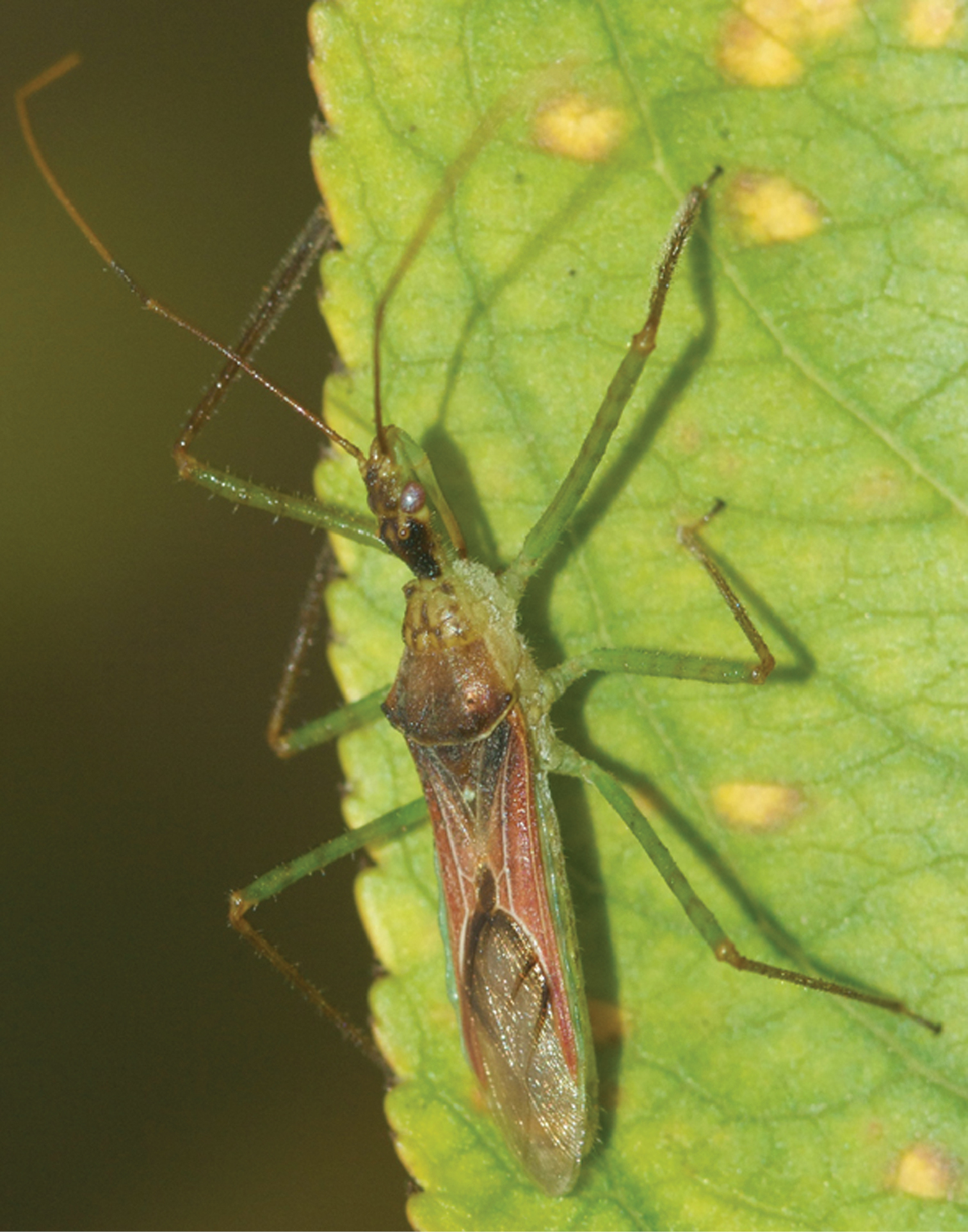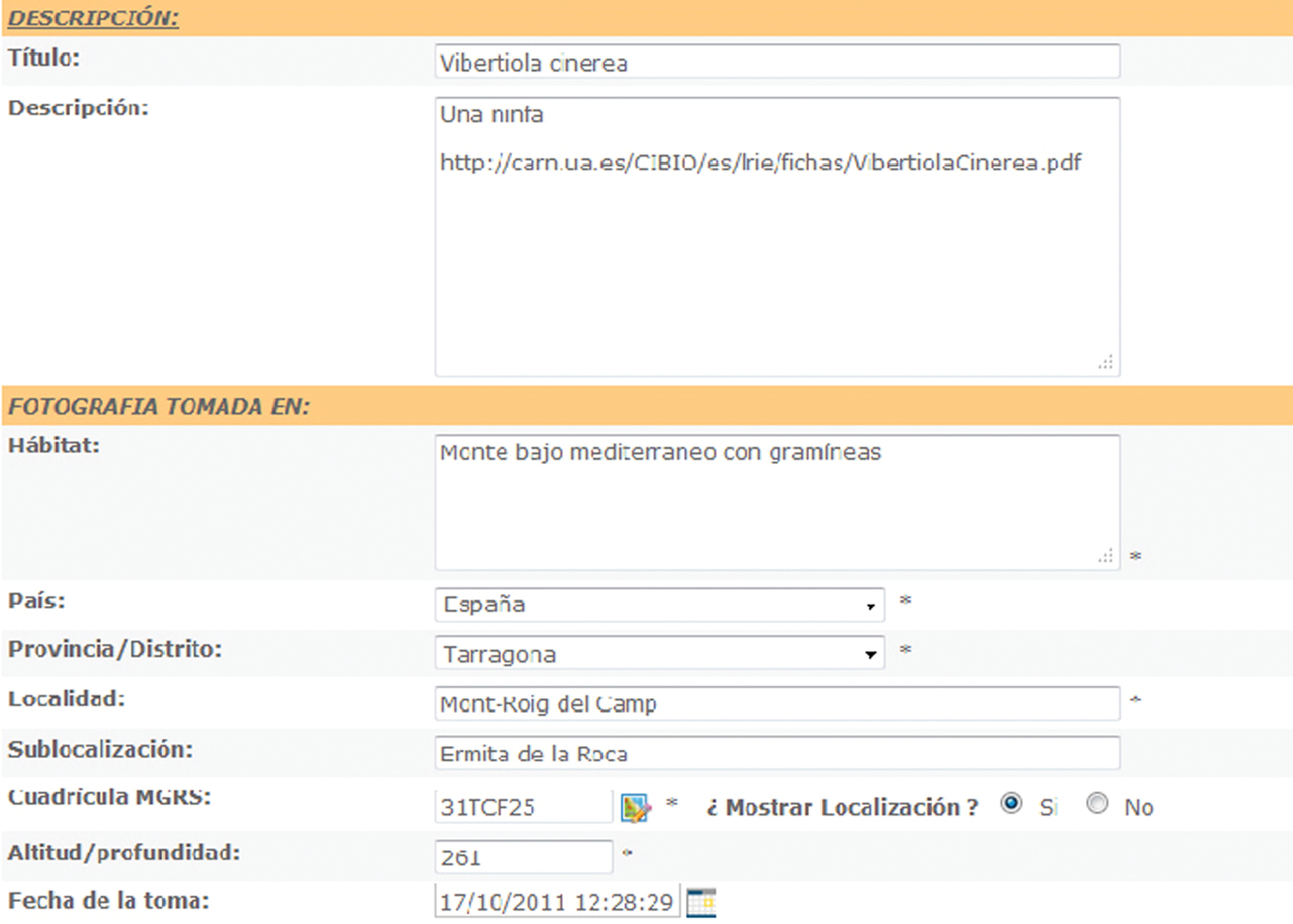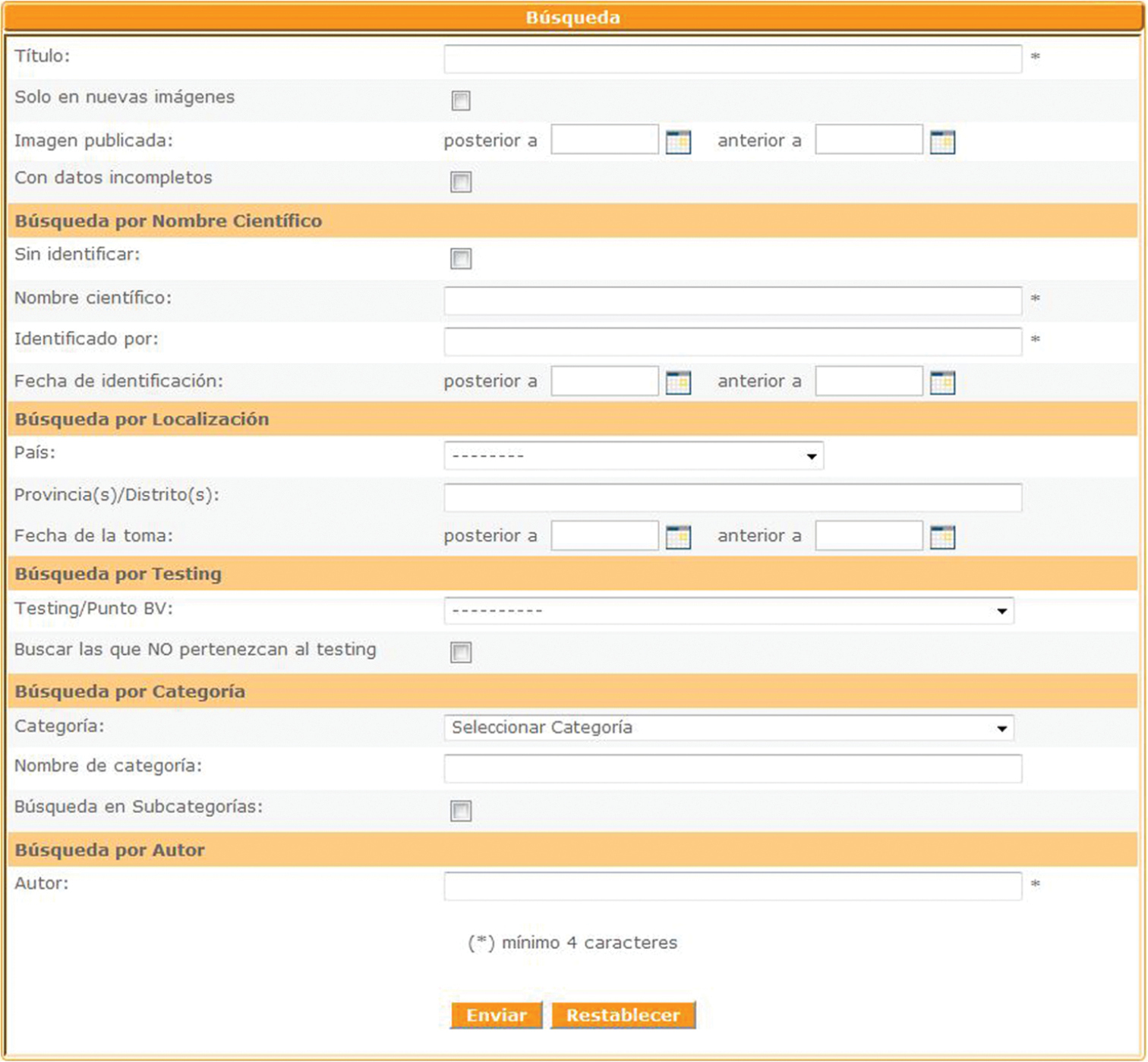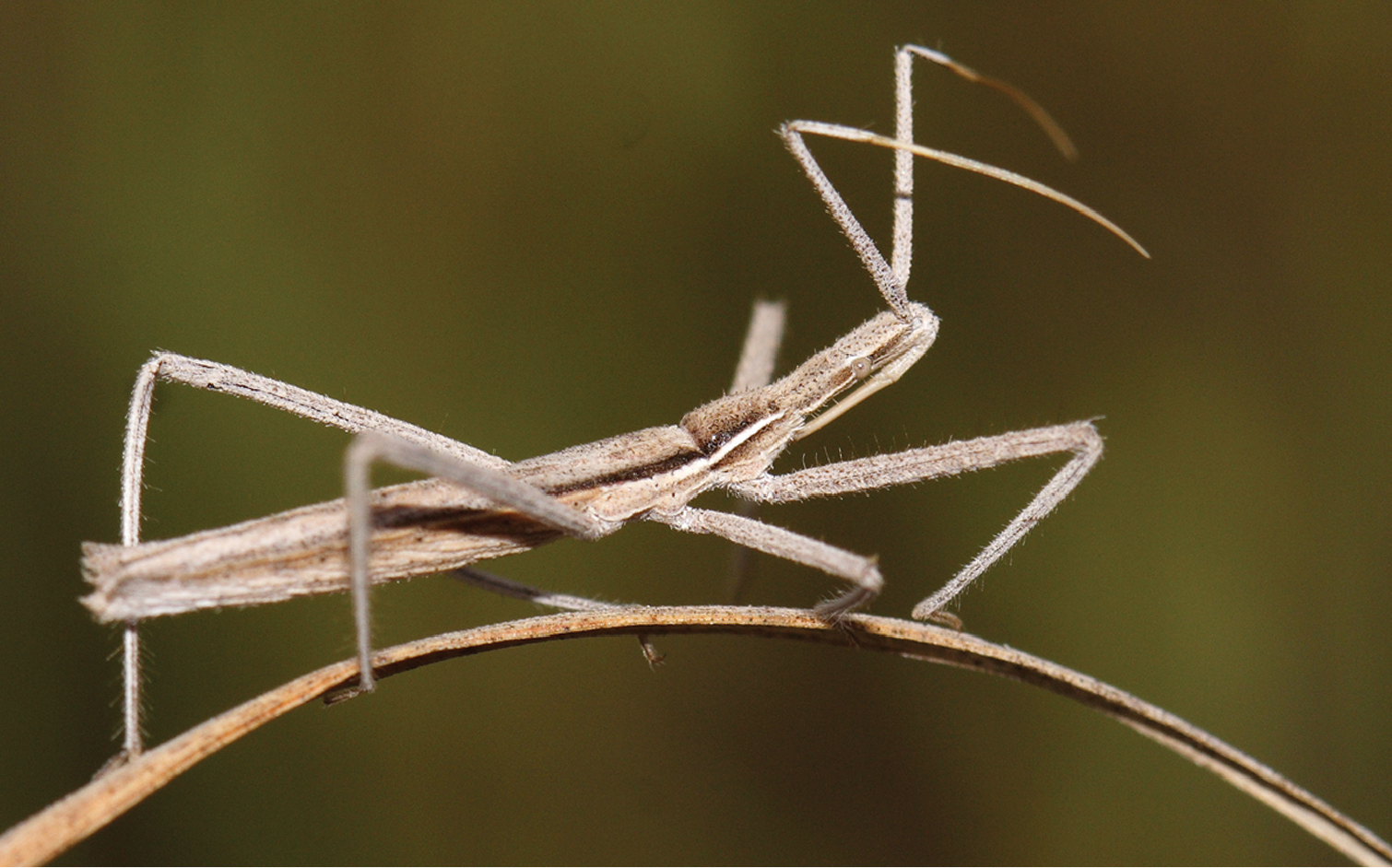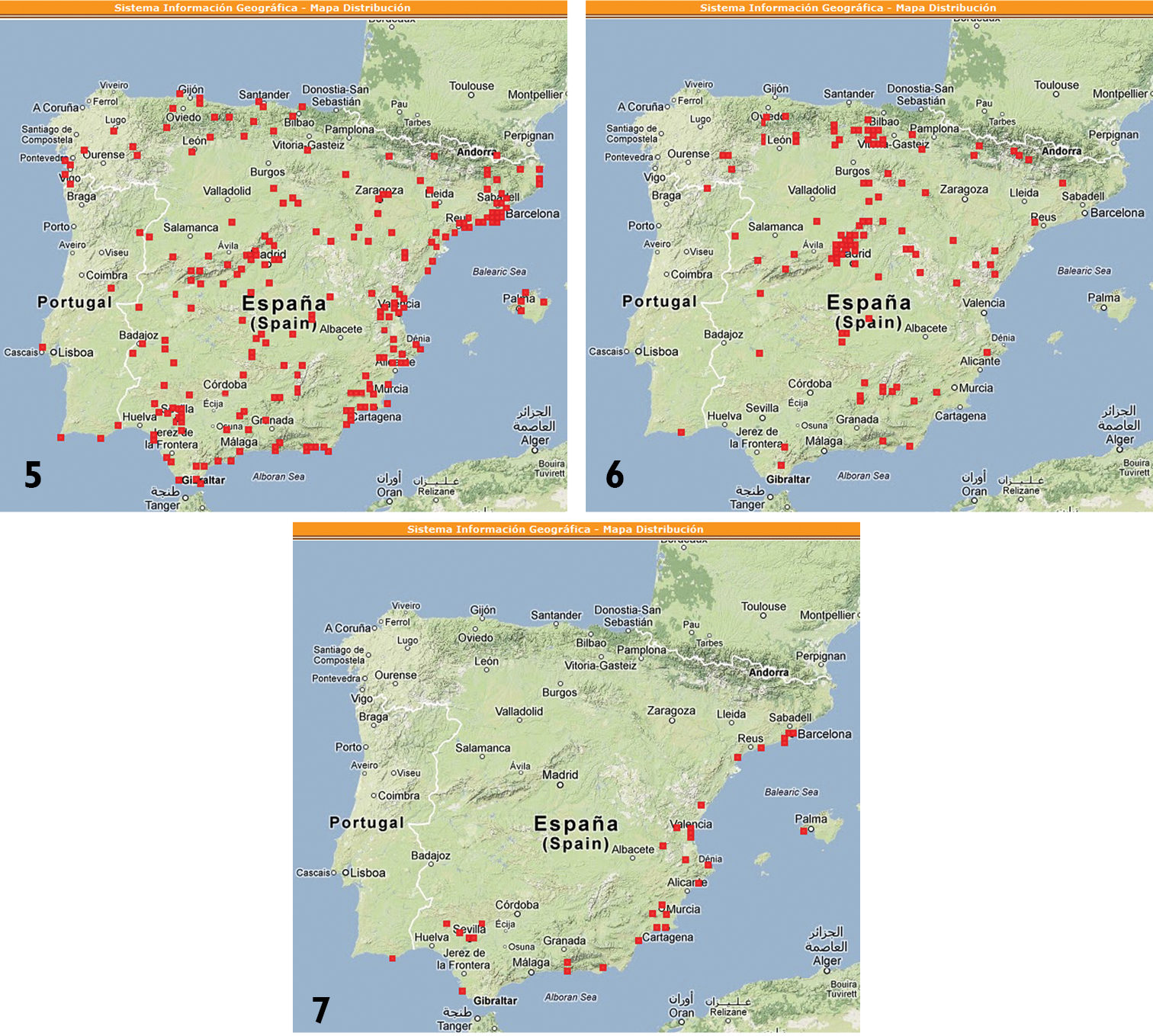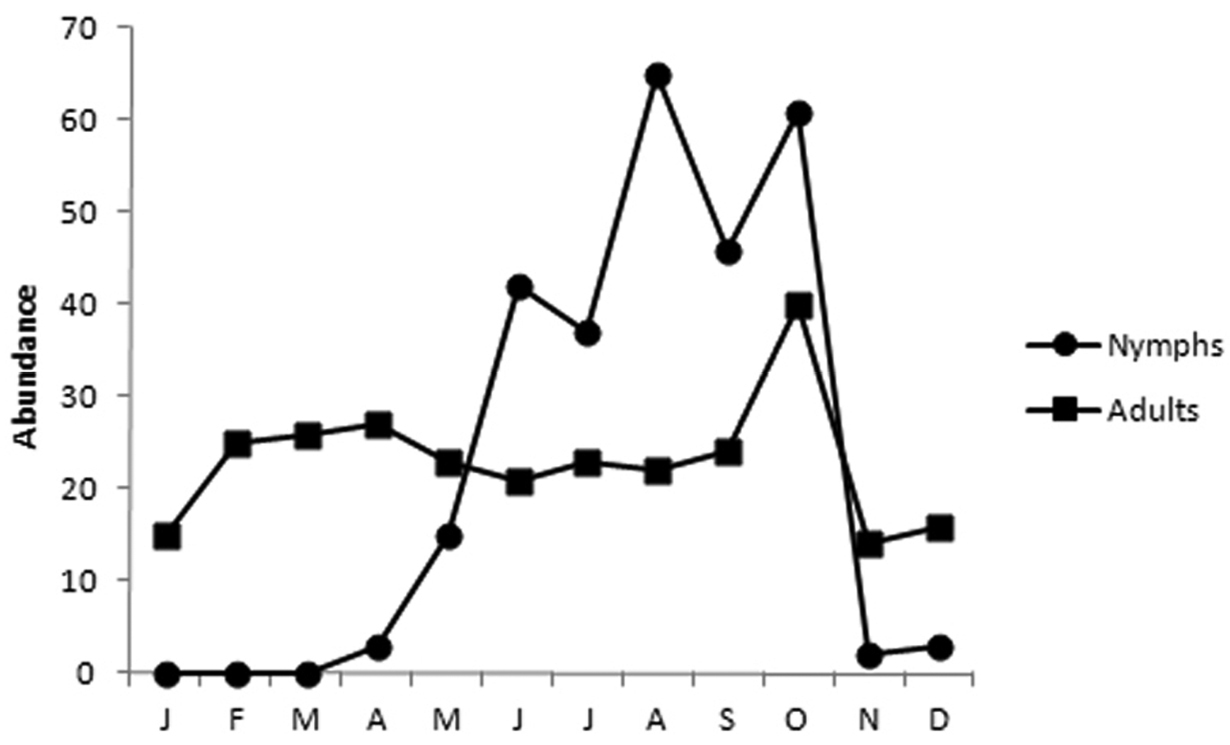| Taxon names | Citations | Turn highlighting On/Off |







(C) 2012 Marta Goula. This is an open access article distributed under the terms of the Creative Commons Attribution License 3.0 (CC-BY), which permits unrestricted use, distribution, and reproduction in any medium, provided the original author and source are credited.
For reference, use of the paginated PDF or printed version of this article is recommended.
Citation: Goula M, Sesma J-M, Vivas L (2012) Photosharing websites may improve Hemiptera biodiversity knowledge and conservation. In: Popov A, Grozeva S, Simov N, Tasheva E (Eds) Advances in Hemipterology. ZooKeys 319: 93–105. doi: 10.3897/zookeys.319.4342
Internet photosharing websites is a very recent and powerful tool for the study of biodiversity, and a meeting point of general public fond of nature and professional naturalists. The article discusses when an uploaded picture is scientifically valuable, and the benefits of structured hosting websites for the most fruitful information retrieval. Examples are given of faunistic, biological, ecological and conservation results concerning Hemiptera provided by information download from photosharing websites.
Macrophotography, entomology, Hemiptera, new technologies, Public Participation in Scientific Research, photosharing websites
Illustration in science has always been an indispensible tool to make scientific communication more efficient. This general statement is particularly true regarding natural sciences, as for example geology, botany or zoology. Until the invention of photography (or its eve) in the 1810’s by Niepce, the only chance for representing any subject were designs made by hand, either by the naturalist himself if picture-skilful, or by a designer collaborating with the naturalist to make scientifically valuable designs by highlighting the distinctive traits (
Photography was used by naturalist scientists very soon after being invented. From then onwards, and in a relatively short time, to take good pictures either in the field or in the laboratory has become progressively easier. The turning point was the advent of digital photography in the 1970’s, which has made everyone of us a potential photographer on any subject, including nature (
Generalized access to digital macro photography and to internet has greatly increased the uploading of insect images to internet photo sharing websites, founding a democratic revolution in the study of biodiversity (
The aim of this work is to highlight how Heteropterists’ research may be enhanced by implementing information provided by scientifically valuable uploaded pictures, in a fruitful collaboration between professional and amateur entomologists as an exercise of general public participated science.
Internet hosts a very high number of websites whose main focus is insect macro photography. A Google search under “Hemiptera photo gallery” showed approximately 41.600 results [accessed 14 November 2012].
Uploaded macro photographs may be scientifically valuable when they provides (a) shooting date; (b) shooting site data, including georeferenced data in current units as UTM or Latitude/Longitude; and (c) features needed to identify the specimen to species level. It is worth to note that date and site shot requirements parallel the field data stated in classical insect collection labels (
An identifiable Hemiptera image deprived of shooting date and site may still have a value for the professional hemipterists in certain circumstances. For example, images uploaded in the popular photosharing website
Also, pictures without shooting data are the rule in online visual identification guides. Generally speaking, websites hosting visual guides are organized according to a taxonomic system, either explicit in the website, as for example in the “
The use of isolated uploaded pictures becomes much more fruitful when they at least provide information on the shooting site and date. The use of these pictures ranges from species conservation to faunistics or biology.
Conservation photography, a growing developing discipline stemmed from nature photography, creates pictures to serve the purpose of conserving nature (
Faunistics may benefit from uploaded, fully labelled photographies. A great effort is being made to catalogue all biota. Nowadays technology, with which creation of digital insect collections is much facilitated, may heavily contribute to this purpose (
Zelus renardii Kolenati, 1856 (Reduviidae, Harpactorinae). Photo K. Kamppeter. Determination L. Vivas.
Biology of a species may be described or better profiled with uploaded pictures documenting host plant or habitat, or labeling altitude of shot. Dated pictures may enlarge the known species period of activity or increase the knowledge of the species phenology.
Last and beyond the purpose of macrophotographies currently available internet photosharing websites, is the uploading of multiple-view high-resolution images to produce e-types. The profit to all taxonomists is out of doubt, as accessing available e-types is a quicker and afordable procedure than visiting museums or asking for type specimens loans (
The examples presented in the previous section refer to Hemiptera macro photos hosted in simply structured websites, either with or without general public contributions. In these websites, photographs may be very well documented, but they are unlinked from each other, so that retrievable information, although valuable, is very limited.
Much more flexible and fruitful information may be retrieved when the hosting website links pictures and associated data to a data base file, i.e. an excel file. The turning point is how to ensure that contributing photographers will include required associated data in the uploading process. The description given below on photosharing procedures is taken from the Spanish internet photosharing website “
As the first step, when uploading a picture the author is constrained to fill a list of obligatory fields, the shortest list being (Fig. 2) shooting date and locality, including country, district or province and georeference data through the selection of the locality on a digital cartography. Also very valuable are habitat description and altitude.
Fields to be filled when uploading pictures to
Once in the photosharing website system, the picture is confidently identified. Tentative identification may be proposed by the author, or by the website administrators. Checking by an expert is always advisable and compulsory when identification is not so straightforward. Thus, part of the website administrators’ job is to organize a network of experts who may attend consultations.
Filled data and species identification are automatically downloaded to an excel file, so that data linked to each uploaded photograph will contribute to website database. A friendly windows interface allows consulting photo sharing website database according to one or more filled fields (Fig. 3), and a large amount of new information may be generated, including all the cases commented before in relationship with isolated uploaded pictures. For the sake of simplification, only a few examples, not overlapping those previously stated, are given below. Examples will deal with conservation, faunistics, biology and ecology. Describing completely the retrieval power of a database-linked photosharing website is beyond the scope of this article.
Windows interface implemented in
Vibertiola cinerea Horváth, 1909 (Reduviidae, Harpactorinae) (Fig. 4) is a Mediterranean species extending to the Sinai and Yemen. Vibertiola cinerea is presentd as Vulnerable (D2) in the Spanish Invertebrate Red List (
Vibertiola cinerea Horváth, 1909 (Reduviidae, Harpactorinae). Photo JM Sesma. Determination L. Vivas.
Spilostethus is a bigsized Lygaeinae genus with only three species belonging to the Iberian fauna. Spilostethus pandurus (Scopoli, 1763) and Spilostethus saxatilis (Scopoli, 1763) are very commonly found, but Spilostethus furcula (Herrich-Schaeffer, 1850) is scarcely observed along the Iberian Mediterranean climate area. All three species show a bright black and red color pattern, which may mislead a non-expert observer. Size and color make them a frequent target for macro photography, while Spilostethus species are often neglected in field trip collections as they are considered frequent and banal.
5 Spilostethus pandurus (Scopoli, 1763) (Lygaeidae, Lygaeinae) 6 Spilostethus saxatilis (Scopoli, 1763) (Lygaeidae, Lygaeinae) 7 Spilostethus furcula (Herrich-Schaeffer, 1850) (Lygaeidae, Lygaeinae) citations according to retrieved information from 399 pictures hosted at
Spilostethus furcula (Lygaeidae) is an afrotropical species, extending to the Maghreb and the Iberian Mediterranean coast. Northern Iberian localities, as documented in the shooting data from uploaded pictures (Fig. 7), may highlight how living conditions for this species occur now in areas previously hostile to it, thus perhaps illustrating an effect of global warming (
Phenology of Nezara viridula (Linnaeus, 1758) between December 2008 and November 2012, according to data from 550 pictures hosted in
Due to its big size, abundance and frequency, Nezara viridula (Linnaeus, 1758) is a largely portrayed Pentatominae. Except for the very young instars, Nezara viridula nymphs may be identified to species level thanks to their distinctive color pattern. 550 pictures confidently belonging to Nezara viridula were uploaded to
Pictures shot and uploaded to a photosharing website do not arise from a previously planned sampling. Most probably, the contents on a photosharing website are biased towards the most colorful, bigsized, abundant or frequent species. Moreover, the distribution of shoots is uneven within any given territory. For example, natural protected areas, due to its potentially more interesting and diverse biota, may differentially attract nature photographers. Also, accessibility by private or public transportation means may favor certain areas over others, or the generally uneven distribution of human population may result in more shoots in accessible or crowded areas vs. less shoots in the isolated or uncrowded areas. Holiday periods will contribute to uneven shooting activity along the year, as also will cold and warm months. Compilation of all published data on any ubiquitous Hemiptera species concerning Catalan territory shows that field results are also spatially unvently distributed (
An increasing number of non-biologist amateurs are approaching nature in general, and insects in particular, by the practice of macrophotography. In fact, photo shooting and sharing is an accessible way to enjoy nature. When pictures are hosted in a website appropriately designed as previously described, the pleasure of photosharing increases with the pleasure of contributing scientifically valuable information. In fact photo sampling may bring together the general public, fond of nature and photography, to the scientific world, in an exercise close to Public Participation in Scientific Research (PPSR), lacking in this case an intentional design and a previous training (
Scientific information has traditionally being retrieved from specialized books and journals. In the case of entomology, the publication of field sampling results has been the cornerstone of biodiversity datasets. Availability of modern digital photograph technologies, together with worldwide access to internet is profoundly modifying the study of biodiversity. Hemiptera is a good target group to be approached through the combination of these news technologies in reason of their frequency, and some results may be already retrieved from uploaded photographic data.
Full retrievable information power from internet photosharing websites is still to come. Biases and pitfalls due to unplanned photosampling underpinning uploaded photographies will always handicap websites. Website administrators may contribute to minimize those undesirable imperfections by encouraging specific photosampling addressed to areas, groups or periods of time underrepresented in the website database. However, only website database exploitation coherent with those intrinsic limitations may give scientifically fruitful and valuable results.
Internet photosharing websites are a pleasant, accessible and encouraging tool to implement Public Participated Scientific Research in relationship to Hemiptera biodiversity. Much work is needed to catalogue, document and portray the ca. 40.000 estimated bug species living on earth. The help of thousands of volunteer macro photographers uploading their valuable high-quality pictures should not be discarded.
The authors are grateful to the thousands of volunteer macro photographers who upload their photographs and share them graciously with us, to Coen Spithoven and Luis Mata for revision of English text, and valuable suggestions.
